The ‘Beautiful Bridge’ and the
action at Constantin
During the infamous retreat to
Corunna in north-west Spain in the winter of 1808/09, Blakeney, a young boy of
the 28th Regiment, mentions ‘a beautiful bridge’ somewhere between
the villages of Nogais and Constantin. He also describes in his memoirs three
major events which occurred along this section of the retreat.
1)
A holding action at
the ‘beautiful bridge’
2)
The loss of the
Military Chest
3)
A more serious combat
at the Constantin bridge, (5th January 1809).
Many sources have confused the
action at ‘the beautiful bridge’ with the more serious affair at the Constantin
bridge by a particular error of location and have at times mixed one with the
other.
Two questions arise from this;
firstly, where is the ‘beautiful bridge’ in relation to the bridge at Constantin,
and secondly, where was the Military chest lost? Here it was that two wagons
full of silver dollars, amounting to the sum of twenty five thousand pounds were
thrown over a precipice because the exhausted bullocks drawing it could not
continue any further.
To research either question it is
obviously best to turn to the few eye witness accounts namely, Lt Cadell, Lord
Londonderry, Henry Milburne, Ker-Porter, Robert Blakeney, Friedrich Schaumann,
Captain Gordon, Col Graham and Adam Neale an army physician.
Neale conveniently made sketches
along the route, one of which is entitled ‘Bridge near Constantin’, which
inadvertently adds to the Historian’s dilemma of tracing the actual location.
Neale’s representation of the bridge is actually Blakeney’s ‘beautiful bridge’,
22 kilometres away from Constantin. Consequently many authorities have
mistakenly believed this bridge to be the scene of the serious action at the
village of Constantin.
Neale’s ‘bridge near Constantin’ is
in fact at the village of Cruzul, the bridge spans the Rio Cruzul and can still
be reached by one of the few remaining old sections of road that was used by Sir
John Moore’s retreating army.
Adam Neale’s ‘Bridge near Constantin’
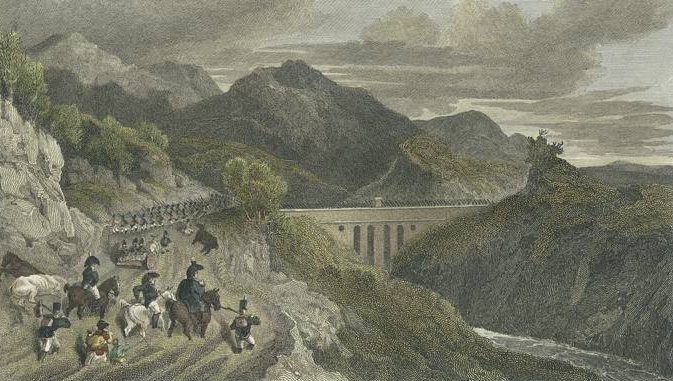
Ker Porter also drew a sketch
entitled ‘Mountain of Nogallis leading to Lugo’, which depicts Blakeney’s
‘beautiful bridge’ and shows evidence of the long tail of a retreating army over
winding narrow snow ridden hills. However, there are some artistic discrepancies
with the surrounding landscape.
Sir Robert Ker Porter ‘Mountain of
Nogallis leading to Lugo’
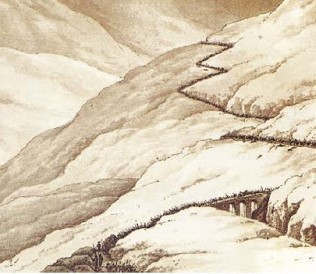
Blakeney tells us that the rear
guard were constantly in contact with the enemy’s advanced troops but here they
carried out a holding action while the engineers made an unsuccessful attempt at
blowing up the main arch of the bridge.
The later NVI road we see today in
many respects replaced the old royal road (Camino Real), which had thus
previously replaced the ancient Roman road. Here the NVI road builders decided
to tunnel through the hill rather than follow the line of the old Royal road and
thus we still have the exact position on the old road where Neale and Ker Porter
opened their easels. The construction of the beautiful Cruzul bridge was begun
during the reign of Carlos III in 1773. When the king died in 1788, Carlos IV
finished the architecture and legend has it that he was ‘astonished’ at the
shear cost of the thing and Queen Isabel II leaning out from her palace balcony
in Madrid remarked, ‘well I can’t see it from here’.
The Cruzul bridge today.
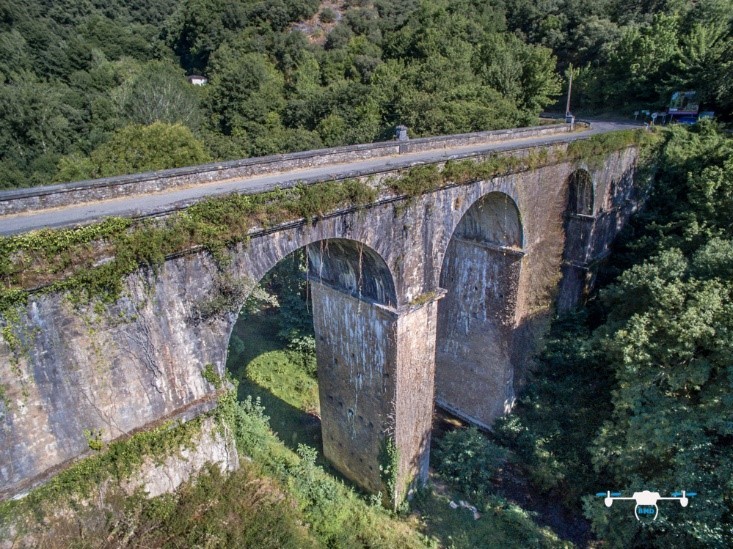
The Map below shows how the town of
Becerrea has grown since 1809 and now dwarfs the little quiet village of Cruzul
and also indicates how windy the original road (in yellow) compares to the later
NVI highway (in Red).

Now compare the modern map with one
from the late 19th century and how the NVI followed much of the old
route when built but took short cuts along the way. This is the route that Sir
John Moore’s Army traversed during the retreat.
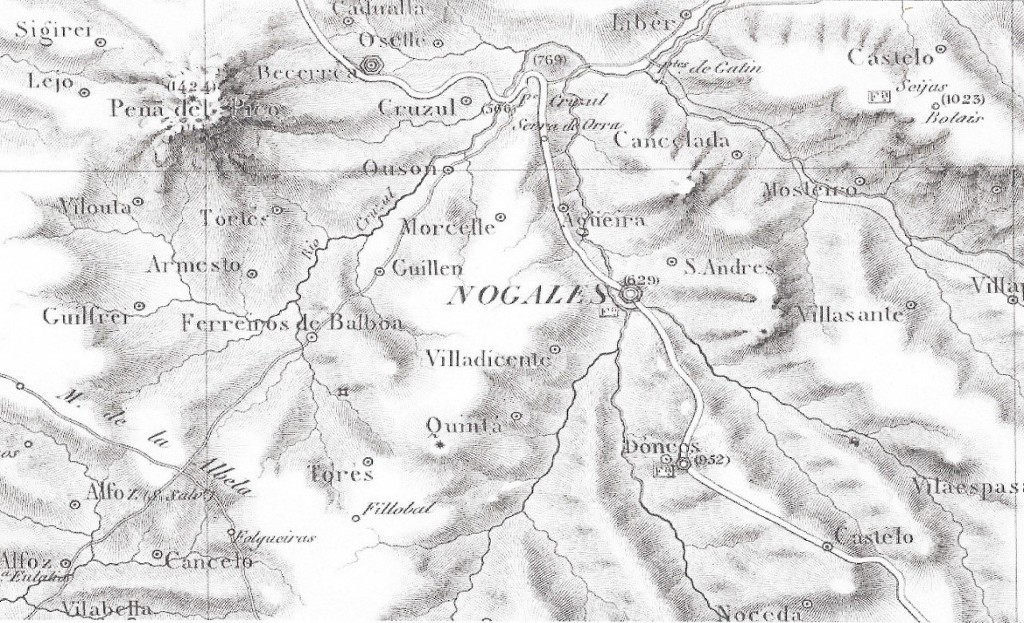
The Cruzul bridge today
showing the NV1 flyover built in 1985 in the distance
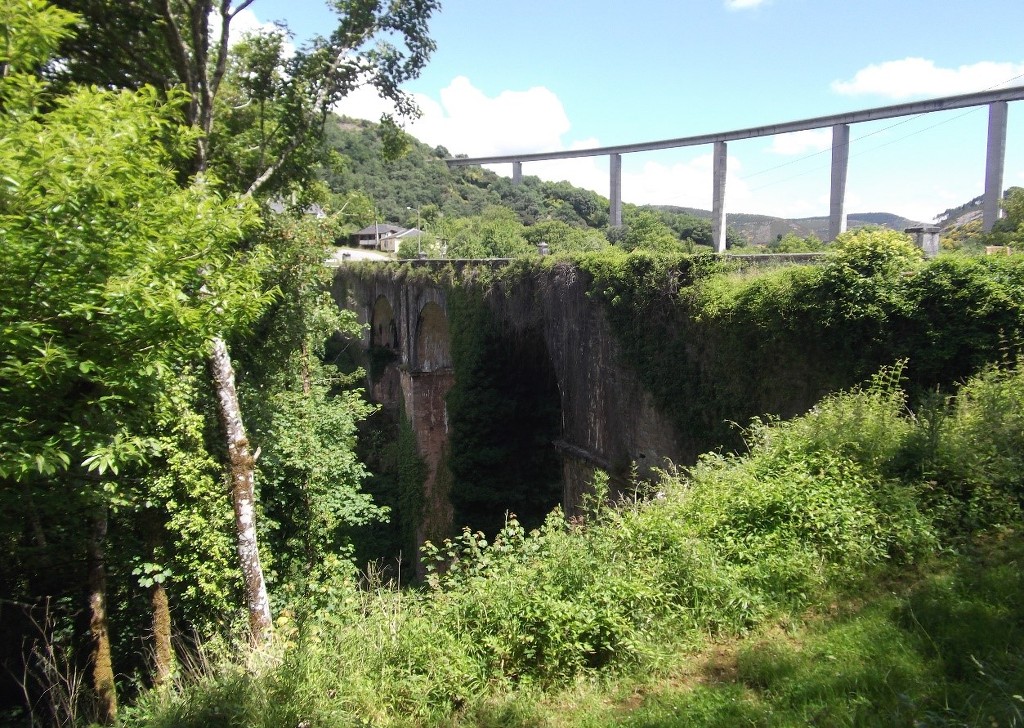
Photo taken from the flyover
looking down at the position where Adam Neale drew his original sketch

The Cruzul or ‘beautiful bridge’ in
1867
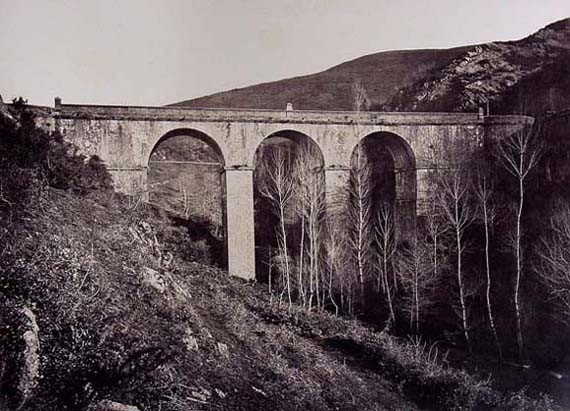
Blakeney states that he halted at
the bridge for about an hour and that the stream under the bridge was ‘fordable
on either side’ making the engineers task pointless, the working party were
eventually ‘sent to the rear to practice their art elsewhere’. Although there
may have been Fords further along the waters edge Friedrich Schaumann says that
the bridge spanned ‘across an abyss through which foamed a mountain torrent’.
And indeed he too found a party of sappers endeavouring to destroy the central
arch.
Captain Gordon of the 15th
Hussars, marching a day ahead of Blakeney also mentions how handsome the
structure was, ‘it would have been a thousand pities to have destroyed so
beautiful an object’. He also adds that near this spot the light mountain guns
of the mule brigade were cast down a precipice.
Clearly this is not the bridge that
the Constantin action took place at. The next significant event along the route
prior to reaching the village was the loss of the Military chest which was
jettisoned off the side of a mountain, the location of which can be roughly
worked out with some concerted research and with time and distance considered.
John Grehan in his recent
publication ‘The Hunt for Moore’s Gold’ has consulted a number of eye witness
accounts and in conclusion determined the disposal site to be just below the
little town of Cereixal or there abouts.
GPS co-ordinates : 42 52’08.8”N 7 10’ 33.6”W
Of course, there has been much
controversy over the exact location of the fallen treasure, but common sense
tells us that what was not scooped up at the time by the passing armies was
probably taken by the locals once the snow had melted. Indeed Grehan himself
relates to a local story where some working - hand peasants were mysteriously
able to purchase their farms outright shortly after the war.
Further along the route there was
apparently a stiff clash of arms on the heights of Retorta before ascending the
main hill which over looks the whole village of Constantin, arriving at around 5
o’clock in the afternoon. The skirmish which took place later that afternoon was
the most important since Cacabelos two days earlier.
Sir John Moore
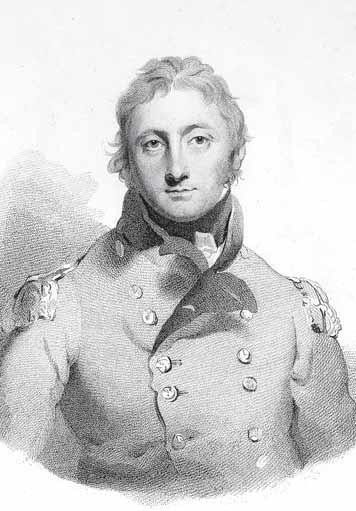
According to some sources the
commander was actually present on the field at Constantin and directed some of
the troops over the bridge.
Sir John Moore being concerned with
the approach road down to the bridge decided to leave a detachment of Rifles,
the 28th Regt and two guns on top of the hill to hold the advancing
enemy whilst the remaining rear guard got themselves over the bridge. With this
done he drew up the 20th, 1/52nd 91st and
remaining Horse Artillery on a low hill directly behind the bridge and awaited
the 95th and 28th to make their way down to the bridge
where General Paget extended them along the near bank of the river.
La Houssaye’s cavalry were at first
instance rather cautious with the British guns keeping them at a safe distance.
The French commander surprisingly let the enemy gain their positions at the
bridge before fully committing himself. Some of the dragoons dismounted to
engage the skirmishers at the bridge and then Merle sent forward one regiment in
dense column to force a passage. Three attempts were made over the next few
hours but they suffered heavily from the returning fire and shrapnel shells
issued from the Royal Horse Artillery posted on the small hill behind the bridge
of Senra over the Rio Neira. The affair continued until around eight o’clock
when the main body of the reserve retired toward Lugo leaving piquets and a
strong party to defend the bridge. An incessant fire was kept up until darkness
intervened, when the remaining supports were silently withdrawn about eleven
thirty.
The Portsmouth Napoleonic Society
'Over The Hills and Far Away'


